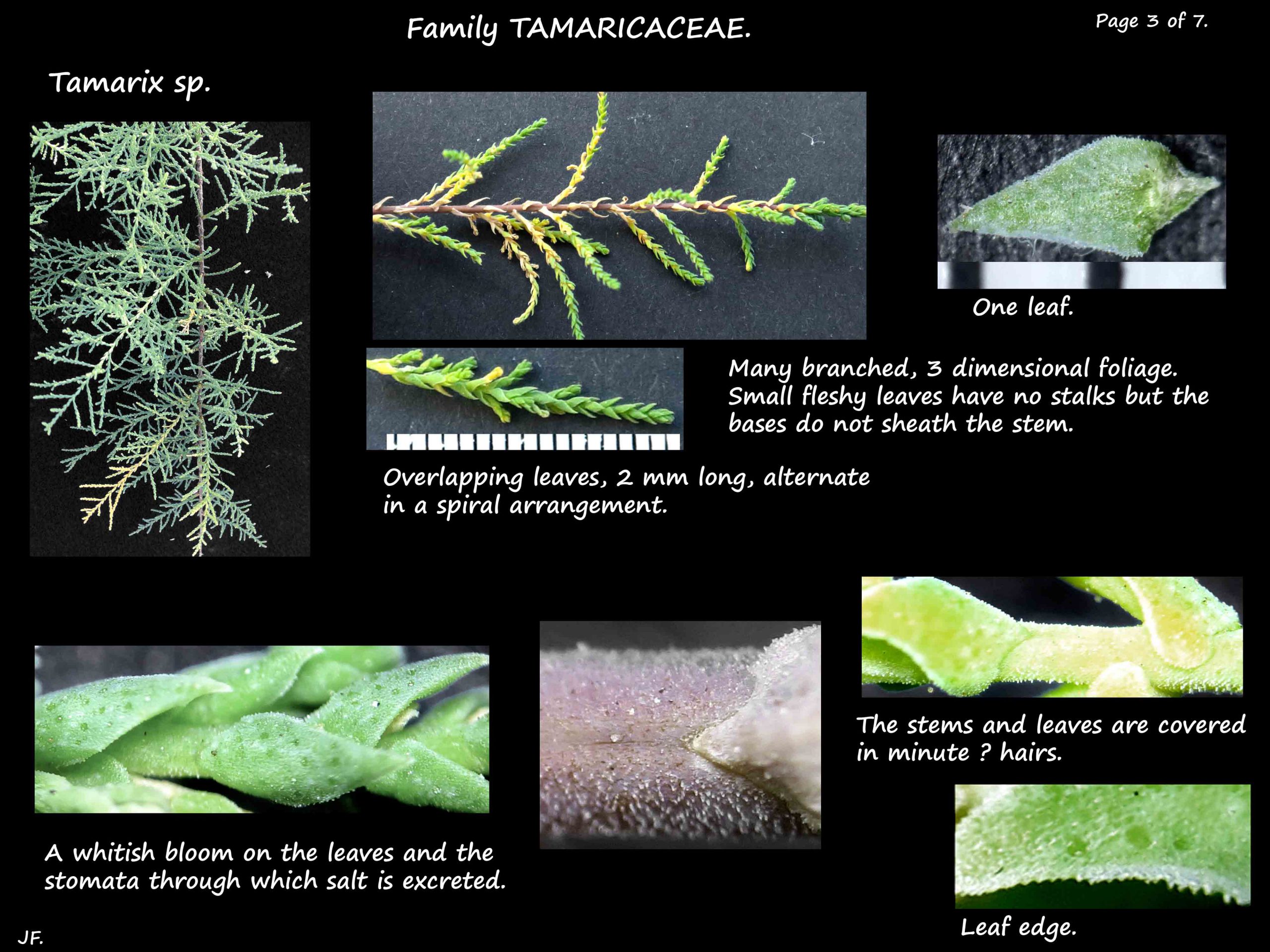Tamarix.
Family Tamaricaceae.
Tamarix species are known as tamarisk, tamarix or salt-cedar.
Some species are invasive and declared weeds.
Evergreen or deciduous large shrubs or small trees with T. aphylla up to 18 m.
They can live for 50 to 100 years.
There may be multiple trunks and they form dense thickets.
The branches are thin and reddish when young.
The grey-green, 1 to 7 mm long, often scale-like leaves overlap.
They can be thin or fleshy.
Flowers, with pink or white petals, are in dense branched clusters or spikes.
The petals have no appendages.
There are 4 or 5 separate stamens.
The ovary has 3 or 4 short styles.
The seeds have hairy tips.
Identification can be difficult as many species are morphologically similar and some interbreed easily.
Some consider T. pentandra, T. tetranda, T. gallica, T. chinensis, T. ramosissima and T. parvifolia to be
separate species while others say they are variations in, or hybrids of, a single species named
T. pentandra or the T. ramosissima/T. chinensis complex.
Tamarix aphylla, T. parviflora, T. chinensis and T. ramosissima are all found in Australia.
T. ramosissima, T. parviflora and T. chinensis are deciduous.
T. aphylla is the most common in Queensland, is evergreen and flower parts are in 5’s.
T. aphylla leaves sheath the stem, T. parviflora do not.
T. aphylla has male and female flowers on the same tree, most other species are hermaphrodites.
T. parviflora has flower parts in 4’s.
T. ramosissima has flower parts in 5’s.
T. chinensis (deciduous and flower parts in 5’s) and T. ramosissima may be the same species based on DNA analysis.
Tamarix aphylla.
The evergreen Athel tree is the largest of all the species.
There are scattered populations in western and eastern Queensland.
It is an environmental weed.
Evergreen large shrubs or small trees commonly about 12 to 15 m high.
There may be multiple trunks and they form dense thickets.
There are some thick branches and many long, thin, drooping ones.
The young, jointed branches are smooth and the older ones rough and deeply furrowed.
Colour varies with age being green, red or purplish then grey or greyish-brown.
The foliage has a feathery appearance.
The leaves are alternately arranged in a spiral.
They are 1 to 2 mm long with no stalks and the bases sheath the stem.
They are not scale-like (although commonly described as such).
They are grey-green or a blue-green.
Salt excreted through the stomata forms a white coating.
Inflorescences are masses of flowers on the ends of drooping, branched stems.
Each small cluster of the pink or white flowers is up to 6 cm long.
Individual flowers, about 2 to 4 mm long, have no stalk.
The separate male and female flowers occur on the same tree.
The 5 sepals are just under 2 mm long and the 5 petals just over.
The nectiferous disc is either a continuous ring or individual lobes.
The stamen filaments insert between the lobes or on either side of a ring.
Fruit are small, 2 to 3 mm long capsules containing numerous seeds.
Seeds have a tuft of hairs on one end.
The species can also propagate by suckering.
J.F.










